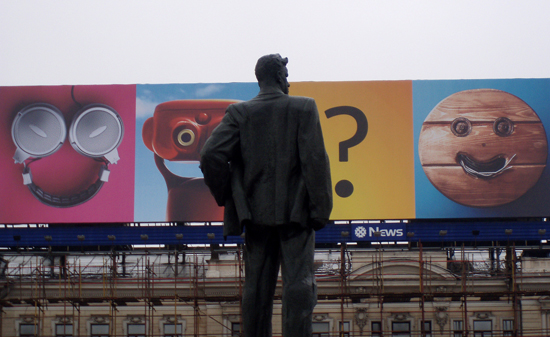How to Influence With Images
- 2012-11-20
- By photomaster
- Posted in HOW-TO

What is the first thing you learn about online content creation? For me, it was that you never create an unending page of text. While paragraphs of writing work well for a book, when placed on a screen it become monotonous, can cause eye strain and is less likely to hold the attention of people using the web. That is due to the habit of users to skim a page for the bullet points, and many won’t bother trying to find them in a text block.
The easiest way to get past this is to break up the content. Small paragraphs, headers and especially images are the perfect way to go about doing this. You can even find yourself influencing readers more directly using images within your text or just at the top of it. Certainly, it will catch their attention more thoroughly than a snappy title will.
A Study On Images
Back in October of this year, and interesting study was released by the Victoria University of Wellington, in Wellington, New Zealand. It was conducted by Newman EJ, Garry M, Bernstein DM, Kantner J and Lindsay DS.
Focusing on people belief and reactions to news of a celebrity’s death, they found that those who saw a story with a picture were more likely to believe the death announcement. That was even though the image was of the celebrity alive, and true in both cases where the celebrity had actually died, or the announcement was false. An interesting explanation into how often false claims of deaths spread online.
Citing comedian and faux news anchor Stephen Colbert and his concept of ‘truthiness’, they said that it was all due to the individuals likelihood to go with what “feels” like the truth. Apparently, in four separate experiments the researchers found that the subjective feeling of truth increased when images were used to enhance the story.
Images For Persuasion
I have found this to be true with my own work. Those posts on my blog that use images directly related to the concept of the post inevitably do much better than those using random stock images. Since this correlation has been found again and again, I have been taking more care in using photos that really support the content, rather than those that are vaguely related.
In order to persuade a reader, you need to do the same. Having a photo that pushes the message visually will engage with a part of the viewer’s brain that creates that feeling of ‘truthiness’, which will make them more likely to look at you as an authority. A status that will extend to the content you provide, and so make the user more likely to both return to your site, and to find value in what you write.
Descriptive text can be another important element to the whole puzzle. When you use adjectives that paint a rich image of your content, it will spark the reader’s imagination. This has an effect similar to the one produced by relevant images. Using both together can be a valuable tool of influence.
Conclusion
One of the most important resources you will have at your disposal is association. Big brands use this to plant a connection in a consumer’s head, telling them that a certain holiday requires a certain product, for example. This is the same principle you should be using when it relates to images and influence. Because the use of photos and descriptive text are ways to create powerful associations in the minds of your readers.
What do you think of influence and its correlation with images? How do you exploit the practice to the best of your benefit? Let us know in the comments.
Image Credit: 1.
 Use our free gallery to choose a photo for your next blog post: Smart Photo Stock
Use our free gallery to choose a photo for your next blog post: Smart Photo Stock
